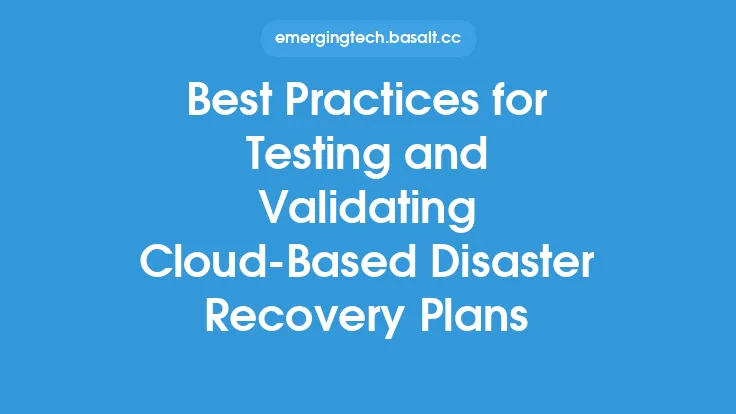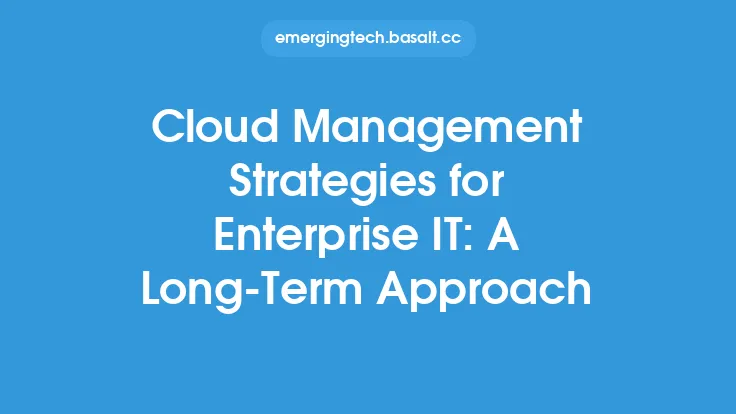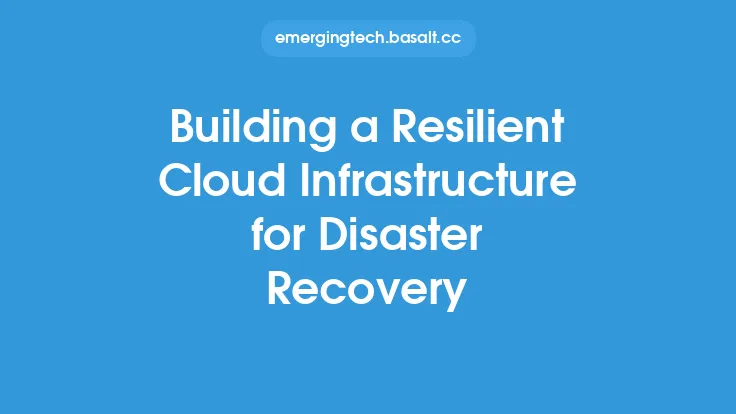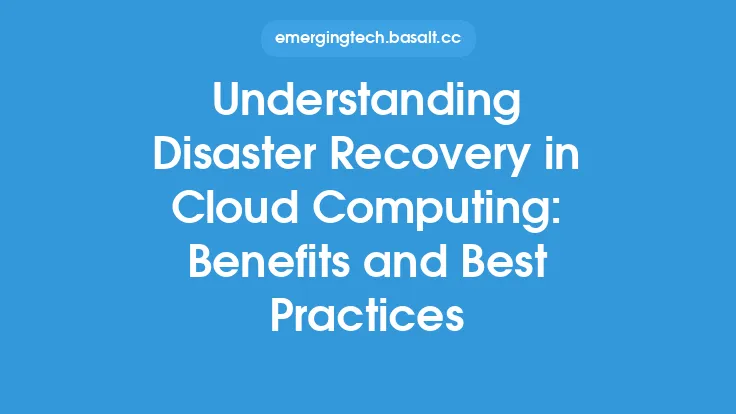In today's digital age, businesses rely heavily on their IT infrastructure to operate efficiently. However, with the increasing complexity of IT systems, the risk of disasters and downtime has also increased. Disasters can be caused by various factors such as natural disasters, cyber-attacks, hardware failures, or human errors. To mitigate the impact of such disasters, businesses need to have a robust disaster recovery strategy in place. Cloud disaster recovery has emerged as a popular solution for businesses to ensure continuity and minimize downtime.
Introduction to Cloud Disaster Recovery
Cloud disaster recovery refers to the process of using cloud computing resources to recover and restore IT systems and data in the event of a disaster. This approach provides several benefits, including reduced costs, increased scalability, and improved flexibility. Cloud disaster recovery solutions can be categorized into two main types: self-managed and managed. Self-managed solutions require businesses to manage their own disaster recovery infrastructure and processes, while managed solutions provide a fully managed service where the cloud provider takes care of the disaster recovery process.
Key Components of Cloud Disaster Recovery
A cloud disaster recovery strategy typically consists of several key components, including data replication, virtualization, and automation. Data replication involves creating copies of critical data and storing them in a separate location, such as a cloud storage service. Virtualization enables businesses to create virtual machines and environments that can be easily replicated and recovered in the event of a disaster. Automation involves using software tools to automate the disaster recovery process, reducing the risk of human error and minimizing downtime.
Cloud Disaster Recovery Models
There are several cloud disaster recovery models that businesses can adopt, depending on their specific needs and requirements. The most common models include:
- Cloud-based backup and restore: This model involves backing up data to a cloud storage service and restoring it in the event of a disaster.
- Cloud-based replication: This model involves replicating data and applications in real-time to a cloud environment, enabling rapid recovery in the event of a disaster.
- Cloud-based high availability: This model involves using cloud resources to create a highly available environment, where applications and data are always available, even in the event of a disaster.
- Hybrid cloud disaster recovery: This model involves using a combination of on-premises and cloud resources to create a disaster recovery environment.
Benefits of Cloud Disaster Recovery
Cloud disaster recovery provides several benefits to businesses, including:
- Reduced costs: Cloud disaster recovery solutions can reduce the costs associated with traditional disaster recovery approaches, such as building and maintaining a secondary data center.
- Increased scalability: Cloud resources can be easily scaled up or down to meet the needs of a disaster recovery environment.
- Improved flexibility: Cloud disaster recovery solutions provide businesses with the flexibility to recover their IT systems and data from anywhere, at any time.
- Enhanced reliability: Cloud providers typically have built-in redundancy and failover capabilities, ensuring that IT systems and data are always available.
Cloud Disaster Recovery Security Considerations
When implementing a cloud disaster recovery strategy, businesses need to consider several security factors, including:
- Data encryption: Data should be encrypted both in transit and at rest to prevent unauthorized access.
- Access control: Access to cloud resources and data should be strictly controlled, using techniques such as multi-factor authentication.
- Network security: Cloud networks should be secured using firewalls, intrusion detection systems, and other security measures.
- Compliance: Businesses need to ensure that their cloud disaster recovery strategy complies with relevant regulations and standards, such as GDPR and HIPAA.
Cloud Disaster Recovery Best Practices
To ensure the success of a cloud disaster recovery strategy, businesses should follow several best practices, including:
- Regular testing: Disaster recovery plans should be regularly tested to ensure that they are working correctly.
- Continuous monitoring: Cloud resources and data should be continuously monitored to detect any potential issues or threats.
- Automation: Automation should be used wherever possible to reduce the risk of human error and minimize downtime.
- Training and awareness: IT staff should be trained and aware of the cloud disaster recovery strategy and their roles and responsibilities in the event of a disaster.
Conclusion
In conclusion, cloud disaster recovery is a critical component of business continuity planning, enabling businesses to recover their IT systems and data in the event of a disaster. By understanding the key components, models, benefits, and security considerations of cloud disaster recovery, businesses can create a robust and effective disaster recovery strategy that meets their specific needs and requirements. By following best practices and regularly testing and monitoring their cloud disaster recovery environment, businesses can ensure that they are always prepared to respond to a disaster and minimize downtime.





